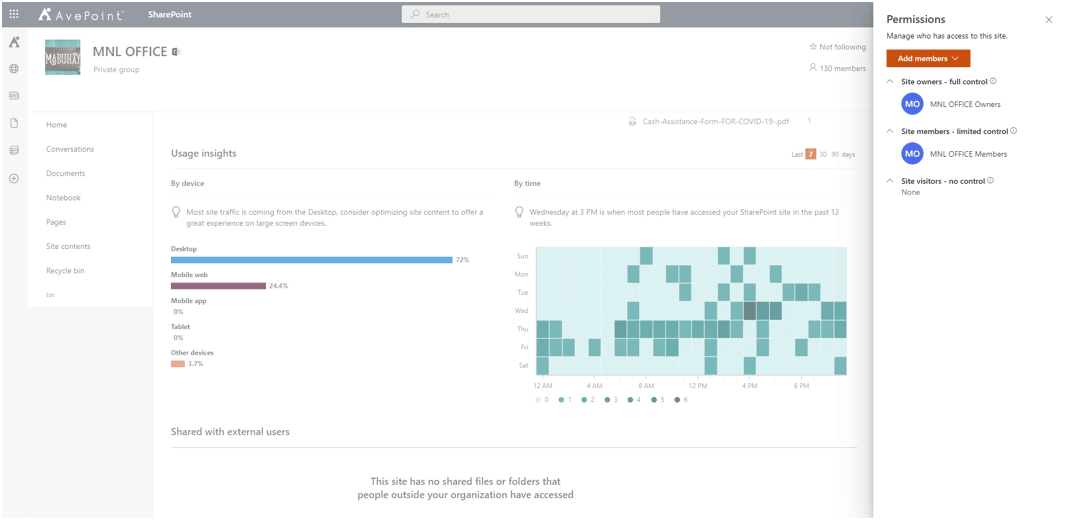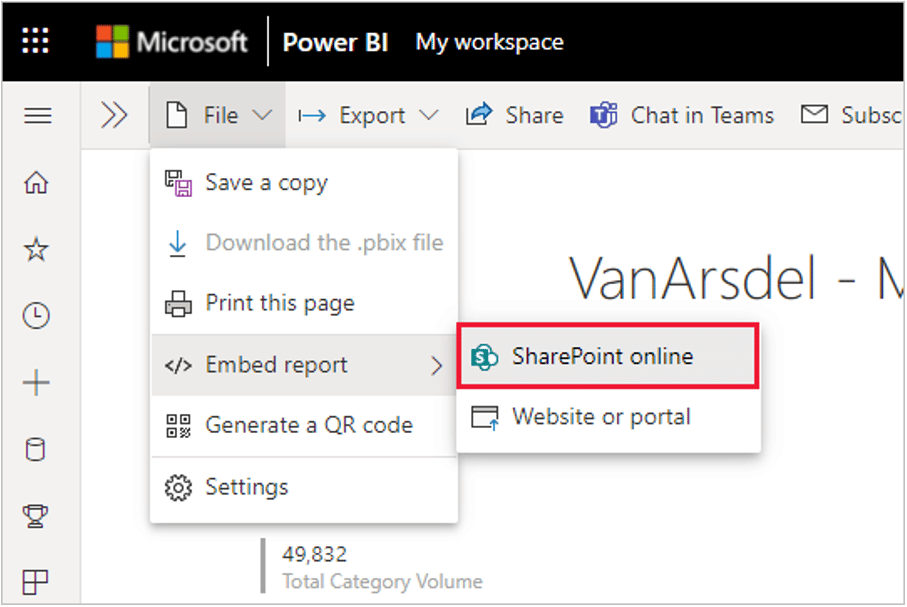Organizations are constantly generating more and more content, often leaving data to accumulate and become unwieldy. Managing storage costs, dealing with retention policies, and regulating content lifecycles are time- and effort-consuming and can even lead to serious problems if done without proper governance.
Today’s data-driven culture now pushes organizations to use data as a weapon for business growth. The context of your data can tell your organization’s story. With the right insight, that data turns into insightful information, providing a pathway to your business’ growth.
The perfect way to get this insight? SharePoint analytics.
SharePoint Analytics: Transforming Content Into Business Information
The crucial role of SharePoint in Microsoft 365 as the central content depot makes it the perfect site to leverage your content analytics. Once you understand your SharePoint environment, it becomes easier to understand your other Microsoft 365 apps.
Here are the 4 key benefits of leveraging SharePoint analytics in your organization:
1. Security Visibility
We’ve always been advocating for visibility as the primary step to security, and with SharePoint’s reporting capabilities, this visibility is right in your hands to use. This manifests in ways like:
- As an administrator, you can activate the SharePoint viewers functionality. Once activated, you will have a list of specific individuals who access your SharePoint sites. With this capability, you can check for any uncharacteristic behavior around access to sensitive or confidential data on your sites.
- Thanks to a documents/folder history that can be viewed both in the document and the SharePoint site it is filed under, you can check every action that’s being done to each file or folder, including who has access to it, who modified it, and when they modified it.
- A SharePoint permissions report is available and lets you see who has access to view, modify, or share a site.

Unfortunately, native Microsoft 365 reports only include basic “Shared with external” data, so if visibility and swift action towards external sharing practices are extra critical for your organization, you can instead utilize third-party solutions such as Policies and Insights.
2. Content Management Insights
One of the most obvious reasons why you’d want to drill into your SharePoint reports is to improve your content management to enhance productivity. Employees need easy access to their workspaces and work documents to avoid wasting time looking for specific data.
Do your creatives need access to logos and templates? Where should your sales professionals look for product pitches and battle cards? How do your global accounting teams sync up their excel files?

With a SharePoint usage report, you can:
- View the total number of unique viewers to a site, as well as find popular content, signaling which content is specifically helpful to your users
- Calculate site visits, site traffic, and the average time spent per user, allowing you to check if a site is crucial to your users’ workflow or if it’s just a reference point
This visibility provides you with what you need to be more accessible to your users and how to structure your content in a way that improves workflow and boosts productivity.
3. Communication + Employee Engagement Improvements
After productivity, start enhancing collaboration. Once you have a good content management system, you can then build better communication and employee engagement programs.
From your SharePoint usage data reports, you now know what type of resources your users frequently look for. From this data, you can either grow your resource materials to accommodate evolving demands or make your resource depot more holistic.
Another option is to create communications based on certain topics and then use your other Microsoft 365 apps to engage your users.
- With platform usage reports, you also have visibility over which platforms your users mostly use to engage with your content.
By building on this data, you can ensure the best employee experience as you meet your users where they are and on what platform they are most comfortable.
4. User Adoption
Lastly, we know how important it is to be able to quantify your investments—to know if your Microsoft 365 investment has been worth it in the short and long term.
SharePoint reporting tools only go so far to help you understand how well your users are adopting Microsoft 365. As you scale your growth, consider using products like tyGraph Analytics for Microsoft 365 Adoption & ROI to gain a complete perspective of workforce analytics for your Microsoft 365 investment. With tyGraph, tap into powerful analytics for Microsoft 365 adoption and licensing, plus compelling insights into your Microsoft Teams calling experience.
On-Demand Webinar: Unlocking Success in Microsoft 365 – Measuring, Delivering & Deploying Insights
Watch Now
Microsoft 365 Power BI and Microsoft Syntex
Power BI is commonly used in Microsoft 365 to visualize data analytics, helping organizations make sense of their data better. With SharePoint Online analytics and Power BI (publishing Power BI to SharePoint), you have the power to create easily digestible reports about your SharePoint data.
To make these reports more accessible to you, your stakeholders, and your users, you can embed Power BI into SharePoint to give you a central SharePoint analytics dashboard to view and share these analytics.

Another recent Microsoft tool specifically built to enhance your Microsoft 365 content analytics is Microsoft Syntex. With the introduction of its enhancements in this year’s Microsoft Ignite conference, Microsoft 365 customers can now get more premium analytics capabilities.
In addition to the benefits you get from SharePoint analytics, it can be paired with third-party software like AvePoint’s tyGraph – analytics for Microsoft 365 to give organizations a view into their connections, actions, and productivity.



